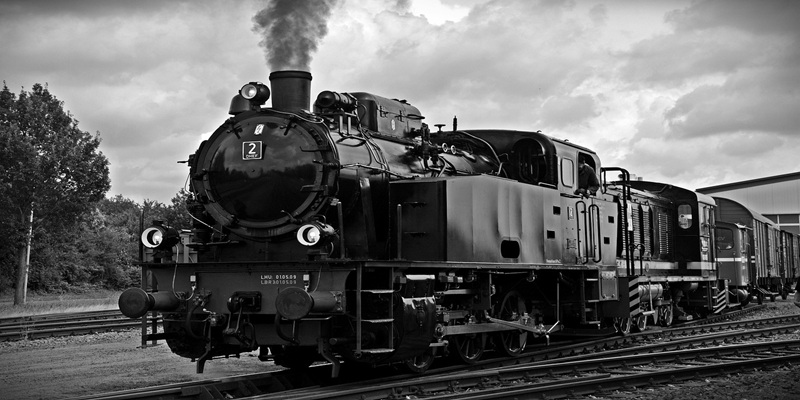The steam locomotive stands as one of the most revolutionary inventions in human history. It transformed transportation, bridged vast distances, and connected cities like never before. Before its advent, travel was slow, arduous, and limited to horse-drawn carriages or boats. The steam engine changed everything, ushering in an era of rapid industrialization and urban growth.
The Birth of the Steam Locomotive
The steam locomotive was born out of necessity. During the early 19th century, industries needed a faster way to transport goods. Horses and canals were inefficient for large-scale trade. Engineers like George Stephenson saw the potential of steam power and developed the first practical locomotives.
By 1825, Stephenson’s Locomotion No. 1 made its debut on the Stockton and Darlington Railway. This marked the beginning of the railway age. Soon after, the Rocket (1829) set new speed records, proving that steam trains were the future.
How Steam Locomotives Worked
Steam locomotives operated on a simple yet brilliant principle. A coal or wood-fired boiler produced steam, which drove pistons. These pistons turned the wheels, propelling the train forward. The system was powerful enough to haul heavy loads across long distances.
Despite their efficiency, steam locomotives required constant maintenance. Engineers had to monitor water levels, fuel supply, and pressure gauges. Yet, their reliability made them indispensable for decades.
The Expansion of Rail Networks
As steam locomotives proved their worth, rail networks expanded rapidly. Governments and private investors poured money into railway construction. By the mid-1800s, tracks crisscrossed Europe and North America.
Connecting Major Cities
One of the greatest achievements of steam locomotives was linking major cities. Before railways, traveling from London to Manchester took days. With trains, the journey shrank to mere hours. Similarly, in the U.S., the Transcontinental Railroad (1869) connected the East and West Coasts. This allowed people and goods to move faster than ever.
Railways also spurred urban growth. Towns near train stations flourished into bustling cities. Businesses thrived as raw materials and finished products could be transported efficiently. The steam locomotive didn’t just move people—it fueled economic progress.
The Social Impact of Railways
Beyond commerce, railways transformed society. For the first time, ordinary people could travel long distances affordably. This led to greater mobility, cultural exchange, and even tourism. Families could visit relatives in distant cities, and workers could seek jobs far from home.
Moreover, railways standardized time. Before trains, each town kept its own local time. However, scheduling trains required synchronized clocks. This led to the adoption of time zones, a system still in use today.
Challenges and Limitations
Despite their success, steam locomotives faced challenges.
High Operating Costs
Running steam trains was expensive. They consumed massive amounts of coal and water. Maintaining boilers and tracks required constant labor. As technology advanced, diesel and electric trains emerged as more cost-effective alternatives.
Environmental and Safety Concerns
Steam engines produced thick smoke and soot, contributing to pollution. Additionally, early trains had safety issues. Boiler explosions and derailments were not uncommon. Over time, engineers improved designs, but these problems persisted well into the 20th century.
The Decline of Steam Locomotives
By the mid-1900s, steam locomotives began fading away. Diesel and electric trains offered better speed, efficiency, and cleanliness. Many countries phased out steam engines in favor of modern alternatives.
Yet, the legacy of steam trains endures. Heritage railways and museums preserve these mechanical marvels. Enthusiasts still celebrate their history, and some tourist lines even operate vintage steam locomotives.
The Lasting Legacy of Steam Locomotives
The steam locomotive was more than just a machine—it was a catalyst for change. It connected cities, powered industries, and reshaped societies. Without it, the modern world would look vastly different.
While steam trains are no longer the backbone of transportation, their impact remains undeniable. They symbolize human ingenuity and the relentless pursuit of progress. Even today, the sight of a steam locomotive evokes nostalgia and admiration for an era that transformed the world.
Final Thoughts
From humble beginnings to global dominance, the steam locomotive revolutionized travel and commerce. It brought people together, fueled economies, and laid the groundwork for future innovations. As we look back, we recognize its role in shaping the connected world we live in today. Would modern transportation exist without the steam locomotive? Perhaps. But one thing is certain—it paved the way for the fast, efficient systems we rely on now. The age of steam may be over, but its legacy lives on in every train that speeds across the tracks today.





























